The Best Ideas from COP30, the UN Climate Summit in Brazil – 18 December 2025
The Clean Coalition was a partner organization for this webinar, which took place on 18 December 2025 at 10am.
Read More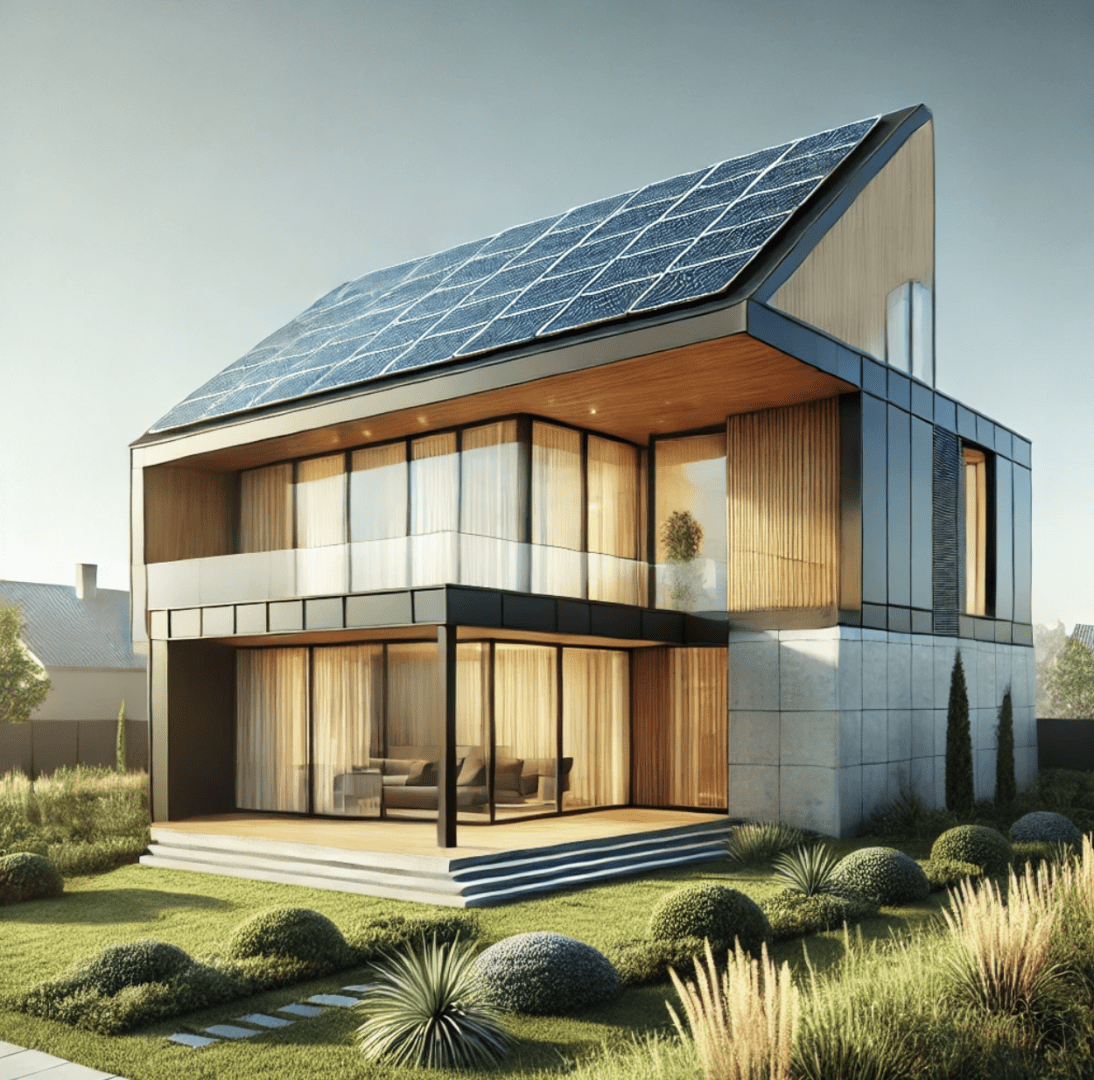
Facilitating 100% electric and Net Zero Energy rebuilding with full Solar Microgrid resilience
California residents are experiencing the growing impacts of climate change. In January 2025, fires tore through the Santa Monica Mountains, devastating communities. As residents begin the difficult process of rebuilding, they face crucial decisions around how to rebuild their homes to ensure sustainability and resilience. The Green Rebuild Initiative (GRI) aims to facilitate sustainable and resilience rebuilds by offering super green home designs that serve as templates, featuring 100% electric and Net Zero Energy (NZE) homes that are supported by Solar Microgrids that deliver unparalleled energy resilience. Additionally, the GRI is curating a corral of green architects, builders, and other collaborators that can implement those designs into new homes for property owners in Pacific Palisades, Altadena, and everywhere beyond.
The Green Rebuild Initiative (GRI) aims to facilitate sustainable and resilient rebuilds through “Super Green” home designs that are all-electric, Net Zero Energy (NZE), and supported by Solar Microgrids for unparalleled resilience. The GRI also encourages homes to be designed for high energy efficiency and low embedded carbon, while being engineered to withstand extreme weather events and built with non-toxic materials
With a clear 5-step roadmap, the GRI aims to facilitate super green rebuilding:.
Beyond the immediate rebuild, a critical goal of this campaign is scaling impact by making these super green designs widely accessible. Through strategic media outreach, key collaborations, and educational webinars, the Clean Coalition will ensure these homes serve as replicable blueprints for future super green new homes.
The campaign is actively engaging high-profile figures and organizations to maximize visibility and support. Notable target collaborators include:
Through media connections and targeted partnerships, the Clean Coalition will amplify awareness of super green building as the future standard for sustainable development.
By transforming disaster recovery into an opportunity for innovation, the GRI is proving that rebuilding after climate disasters can be smarter, cleaner, and more resilient than ever before.
Learn more by watching our GRI Webinar!
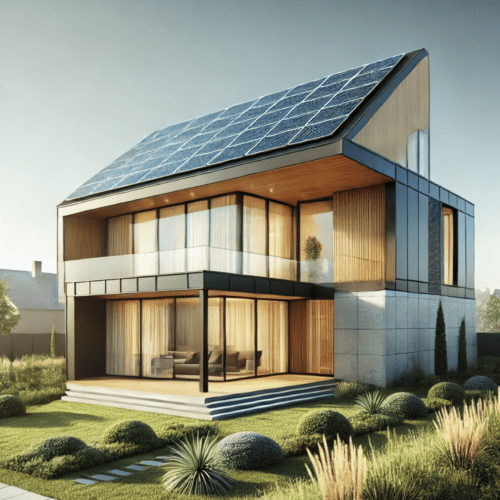
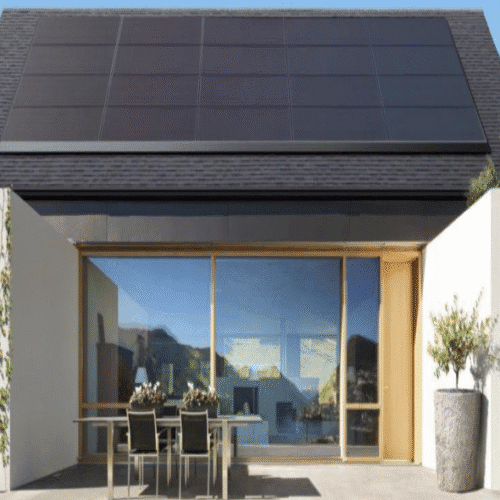
NZE requires the solar to produce at least as
much energy as the home consumes over the
course of a year. Solar needed to achieve NZE
for homes with Title 24 levels of energy
efficiency and two EVs (22,000 miles of home
EV charging per year):
California Energy Code Title 24 (Part 6) falls
far short of NZE:
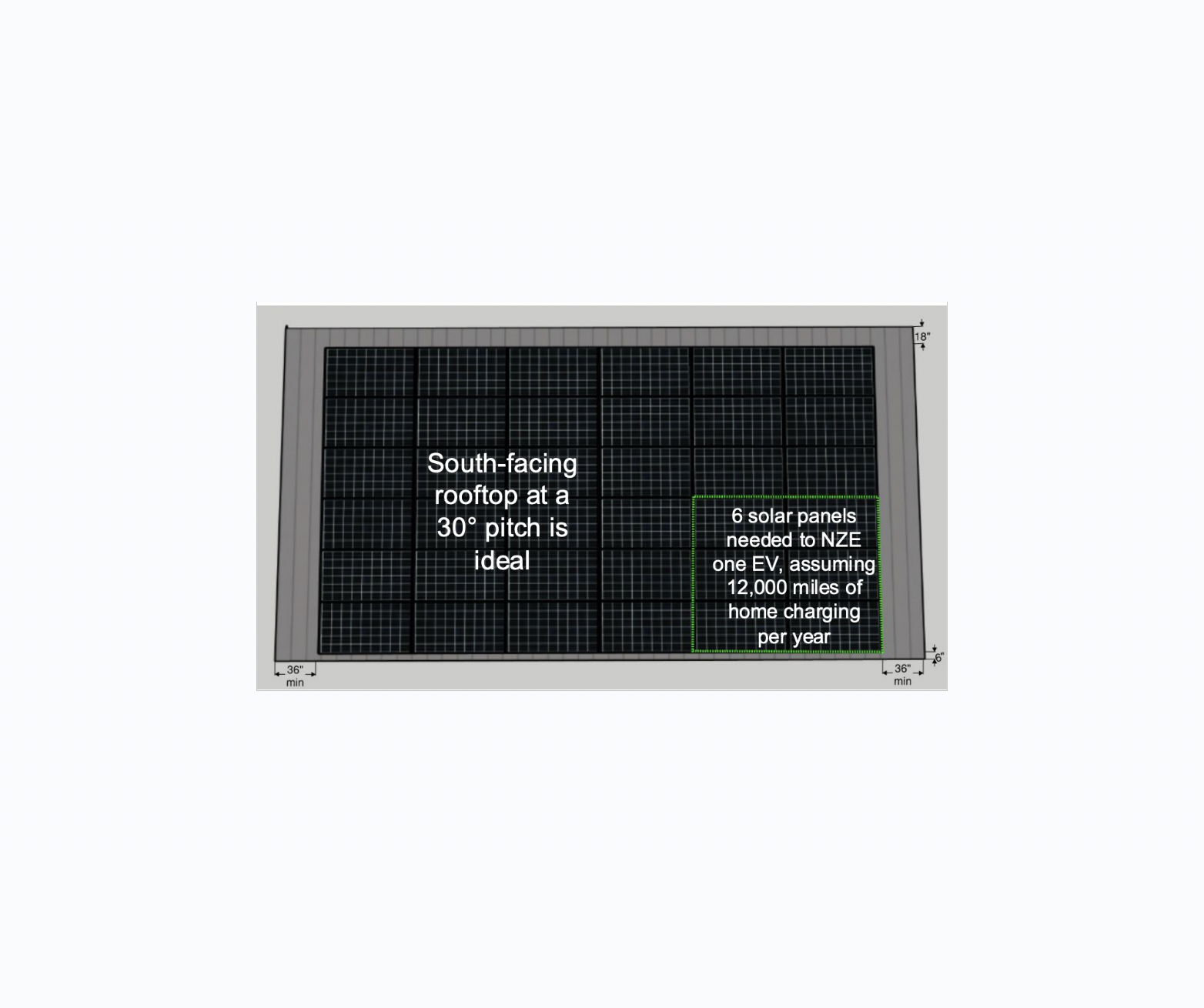
Total single roof area required to achieve NZE for a 2,500 sf house is 1,000 sf, to accommodate 760 sf of solar (14.8 kW) plus setbacks
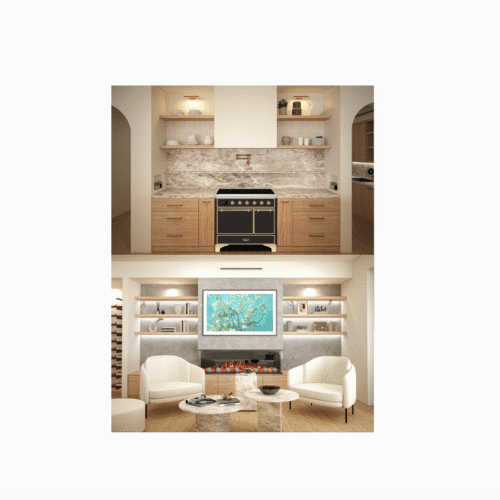
Heating & Cooling
Water Heating
Kitchen Appliances
Lighting & Power
Other Home Systems
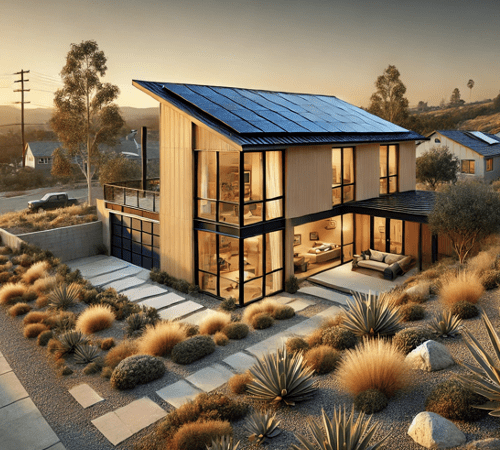
Site Planning: Orientation for maximizing solar benefits for electricity production and passive solar heating in the winter and shading in the summer.
Building Envelope:
Water Efficiency:
Smart Home Integration:
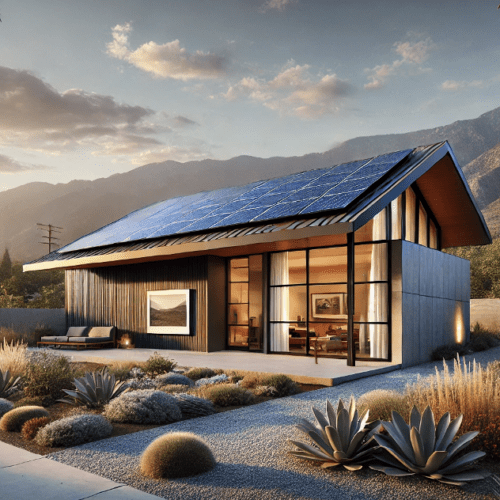
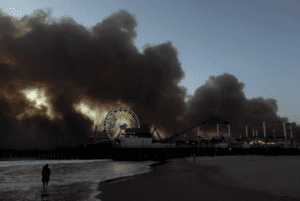 Column: The Los Angeles fires are no excuse to slow down on clean energy: In this article, the Los Angeles Times explores how recent wildfires in Los Angeles should not be used as an excuse to delay the transition to clean energy. While some critics argue that renewable energy sources like solar and wind are unreliable during extreme weather events, experts emphasize that distributed energy solutions—such as microgrids and battery storage—can enhance resilience and reduce reliance on a fragile grid. The piece highlights how investing in clean energy is not just an environmental imperative but also a strategic move to strengthen California’s energy security in the face of climate-driven disasters.
Column: The Los Angeles fires are no excuse to slow down on clean energy: In this article, the Los Angeles Times explores how recent wildfires in Los Angeles should not be used as an excuse to delay the transition to clean energy. While some critics argue that renewable energy sources like solar and wind are unreliable during extreme weather events, experts emphasize that distributed energy solutions—such as microgrids and battery storage—can enhance resilience and reduce reliance on a fragile grid. The piece highlights how investing in clean energy is not just an environmental imperative but also a strategic move to strengthen California’s energy security in the face of climate-driven disasters.
As LA fires still burn, how can we rebuild?: Climate Capital & Media reports on the Clean Coalition’s Solar Microgrid efforts, highlighting its role in supporting sustainable reconstruction after the LA fires.
 Some Los Angeles fires victims are rebuilding their homes without gas appliances: NPR reports on the challenges and opportunities surrounding the rebuilding of homes after the Los Angeles wildfires. With climate activists pushing for a transition to all-electric homes, the debate over whether to install gas appliances or go fully electric has become a key issue. While California aims to phase out gas use in buildings, homeowners like landscape architect Shawn Maestretti are grappling with decisions on energy sources as they rebuild their homes.
Some Los Angeles fires victims are rebuilding their homes without gas appliances: NPR reports on the challenges and opportunities surrounding the rebuilding of homes after the Los Angeles wildfires. With climate activists pushing for a transition to all-electric homes, the debate over whether to install gas appliances or go fully electric has become a key issue. While California aims to phase out gas use in buildings, homeowners like landscape architect Shawn Maestretti are grappling with decisions on energy sources as they rebuild their homes.
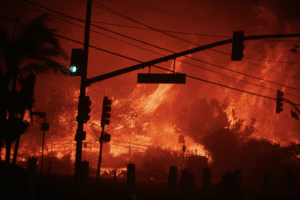 Why Fire-Prone Communities Need Community Microgrids Now: The Clean Coalition reports on the crucial need for Community Microgrids in fire-prone regions. Community Microgrids offer a highly promising solution in creating a safe, disaster-resilient power grid. Community Microgrids are localized energy systems that can operate independently or in parallel with the broader power grid to serve a specific community’s energy needs. They typically integrate solar generation, battery energy storage, and smart grid controls to save the community money on energy costs during regular grid operation and provide life-saving backup power when the grid goes down. By combining the generation capabilities of solar and the storage capabilities of batteries, adequately sized Community Microgrids can provide backup power to the areas they serve indefinitely.
Why Fire-Prone Communities Need Community Microgrids Now: The Clean Coalition reports on the crucial need for Community Microgrids in fire-prone regions. Community Microgrids offer a highly promising solution in creating a safe, disaster-resilient power grid. Community Microgrids are localized energy systems that can operate independently or in parallel with the broader power grid to serve a specific community’s energy needs. They typically integrate solar generation, battery energy storage, and smart grid controls to save the community money on energy costs during regular grid operation and provide life-saving backup power when the grid goes down. By combining the generation capabilities of solar and the storage capabilities of batteries, adequately sized Community Microgrids can provide backup power to the areas they serve indefinitely.
The latest in clean local energy
Learn about our innovative projects and initiatives on our blog, and see what others are reporting about our important work.
The Clean Coalition was a partner organization for this webinar, which took place on 18 December 2025 at 10am.
Read MoreThis podcast episode of Energy Central's "Power Perspectives" welcomes Craig Lewis, Founder and Executive Director of the Clean Coalition, to explore how local solar and storage can flatten the duck curve, cut costs, and build a more resilient grid.
Read articleThe Clean Coalition presented during this in-person gathering, held on Friday, 5 December 2025 from 3:30–5:00 pm PST at CEC’s Environmental Hub, 1219 State St Suite A, Santa Barbara, CA 93101.
Read More